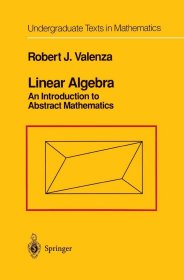
核电厂设计与施工 Design And Construction Of Nuclear Power Plants 英文原版
¥ 488 6.9折 ¥ 704 九五品
仅1件
广东广州
认证卖家担保交易快速发货售后保障
作者Rudiger Meiswinkel
出版社Ernst & Sohn
ISBN9783433030424
出版时间2013-05
印刷时间2013-05
印数1千册
装帧平装
开本18开
纸张轻型纸
页数150页
字数1千字
定价704元
上书时间2024-12-01
- 最新上架
商品详情
- 品相描述:九五品
- 商品描述
-
基本信息
Series:Beton-Kalender Series
Format:Paperback / softback 150 pages
Publisher:Wiley-VCH Verlag GmbH
Imprint:Wilhelm Ernst & Sohn Verlag fur Architektur und te
ISBN:9783433030424
Published:23 Apr 2013
Weight:394g
Dimensions:174 x 241 x 6 (mm)
页面参数仅供参考,具体以实物为准
书籍简介
尽管在扩大可再生能源方面做出了种种努力,但作为一个较长时期内可靠的能源供应战略的一部分,大型发电站将是必不可少的。鉴于它们的二氧化碳排放量低,许多国家正在进入或扩大核能,以覆盖其基荷供应。
核电站所需的建筑结构,其保护功能意味着它们被归类为安全相关,必须满足比常规建筑更严格的特殊建筑要求。本书给出了一个全面的概述,从核法和建筑法的批准方面,特别关注工厂和建筑工程之间的接口,到建筑结构的分类。所有的生命周期阶段都被考虑在内,主要的重点是执行。结构上的事故行为、安全概念和设计以及紧固系统都得到了特别的处理。
德国混凝土年鉴的部分章节现在以新的英文 "Beton-Kalender系列 "出版,以惠及国际读者。
自1906年成立以来,Ernst & Sohn "Beton-Kalender "一直在支持钢筋和预应力混凝土的发展。其目的是出版一本反映 "铁混凝土 "结构进展的年鉴,直到--正如该书的编辑Fritz von Emperger(1862-1942)所表达的--这种建筑形式的 "激烈发展 "结束。然而,"Beton-Kalender "很快就成为土木和结构工程师的参考书,除了1945-1950年以外,此后每年都会出版。
Despite all the efforts being put into expanding renewable energy sources, large-scale power stations will be essential as part of a reliable energy supply strategy for a longer period. Given that they are low on CO2 emissions, many countries are moving into or expanding nuclear energy to cover their baseload supply.
Building structures required for nuclear plants whose protective function means they are classified as safety-related, have to meet particular construction requirements more stringent than those involved in conventional construction. This book gives a comprehensive overview from approval aspects given by nuclear and construction law, with special attention to the interface between plant and construction engineering, to a building structure classification. All life cycle phases are considered, with the primary focus on execution. Accidental actions on structures, the safety concept and design and fastening systems are exposed to a particular treatment.
Selected chapters from the German concrete yearbook are now being published in the new English "Beton-Kalender Series" for the benefit of an international audience.
Since it was founded in 1906, the Ernst & Sohn "Beton-Kalender" has been supporting developments in reinforced and prestressed concrete. The aim was to publish a yearbook to reflect progress in "ferro-concrete" structures until - as the book's first editor, Fritz von Emperger (1862-1942), expressed it - the "tempestuous development" in this form of construction came to an end. However, the "Beton-Kalender" quickly became the chosen work of reference for civil and structural engineers, and apart from the years 1945-1950 has been published annually ever since.
作者简介
作者广泛参与规划、运营和检查、设计新建筑、改造和转换以及更新具体的核电规则。
Dr.-Ing. habil. Rüdiger Meiswinkel从2001年到2012年在汉诺威/德国的E.ON Kernkraft有限公司负责建筑工程,并从2012年起经营恩肯巴赫-阿尔森伯恩/德国的MBI Bautechnik有限公司。他是Kerntechnische Gesellschaft e. V.(核协会)和Deutsche Gesellschaft für Erdbebeningenieurwesen und Baudynamik e. V. DGEB(德国地震工程和结构动力学协会)成员。
Dr.-Ing. Julian Meyer是HOCHTIEF Consult IKS Energy的负责人,法兰克福/德国。他是技术标准委员会和项目组的成员,特别是在核电站的设计和建设方面。
Dr.-Ing. Jürgen Schnell教授是德国凯泽斯劳滕技术大学混凝土结构和结构工程研究所的主任。他是许多德国和欧洲技术标准委员会和独立专家委员会的成员。自2012年以来,他是德国混凝土结构委员会(DAfStb)的负责人。
The authors are extensively involved in planning, operating and inspecting, designing new buildings, retrofits and conversions and updating specific nuclear power rules.
Dr.-Ing. habil. Rüdiger Meiswinkel has been responsible for construction engineering at E.ON Kernkraft GmbH, Hanover/ Germany from 2001 to 2012 and operates since 2012 the MBI Bautechnik GmbH, Enkenbach-Alsenborn/ Germany. He is a member of Kerntechnische Gesellschaft e. V. (Nuclear Association) and of Deutsche Gesellschaft für Erdbebeningenieurwesen und Baudynamik e. V. DGEB (German Association of Earthquake Engineering and Structural Dynamics).
Dr.-Ing. Julian Meyer is head of HOCHTIEF Consult IKS Energy, Frankfurt/ Germany. He is a member of technical standard committees and project groups, inter alia with regard to design and construction of nuclear power plants.
Prof. Dr.-Ing. Jürgen Schnell is director of the Institute of concrete structures and structural engineering at Technical University Kaiserslautern/ Germany. He is a member of numerous German and European technical standard committees and committees of independent experts. Since 2012 he is head of the German Committee for Structural Concrete (DAfStb).
目录
Editorial
Preface
Introduction
- The demand for energy
- Electricity generation
- Importance of nuclear energy
Nuclear energy
- Generating electricity by nuclear power plants
- Nuclear fission
- Radioactivity
- Reactor designs
- Safety philosophy
Approval aspects
- Atomic energy and construction law
- Interface between plant and structural engineering
- Periodical safety reviews
- Planning and design requirements
Building structures for nuclear plants
- General notes
- Nuclear power plants
- Disposal structures
- Building execution
- Dismantling
Extraordinary actions involved when designing nuclear installations
- Overview
- Internal factors
- External actions
Safety concept and design
- Underlying standards
- Partial safety concept
- Design instructions for concrete, reinforced and pre-stressed concrete structures
- Design instructions for steel components
- Particularities of containment design
Fastening systems
- Fastening types
- Fastening with headed studs
- Fastening with metallic dowels
- Corrosion protection
- Fire resistance
Waterproofing of structures
- Purposes of waterproofing structures
- Requirements on waterproofing structures
- Black tank
- White tank
Ageing and life cycle management
- Overview
- Ageing management of buildings
- Ageing mechanisms in building materials
- Implementation and documentation
References
— 没有更多了 —





















以下为对购买帮助不大的评价